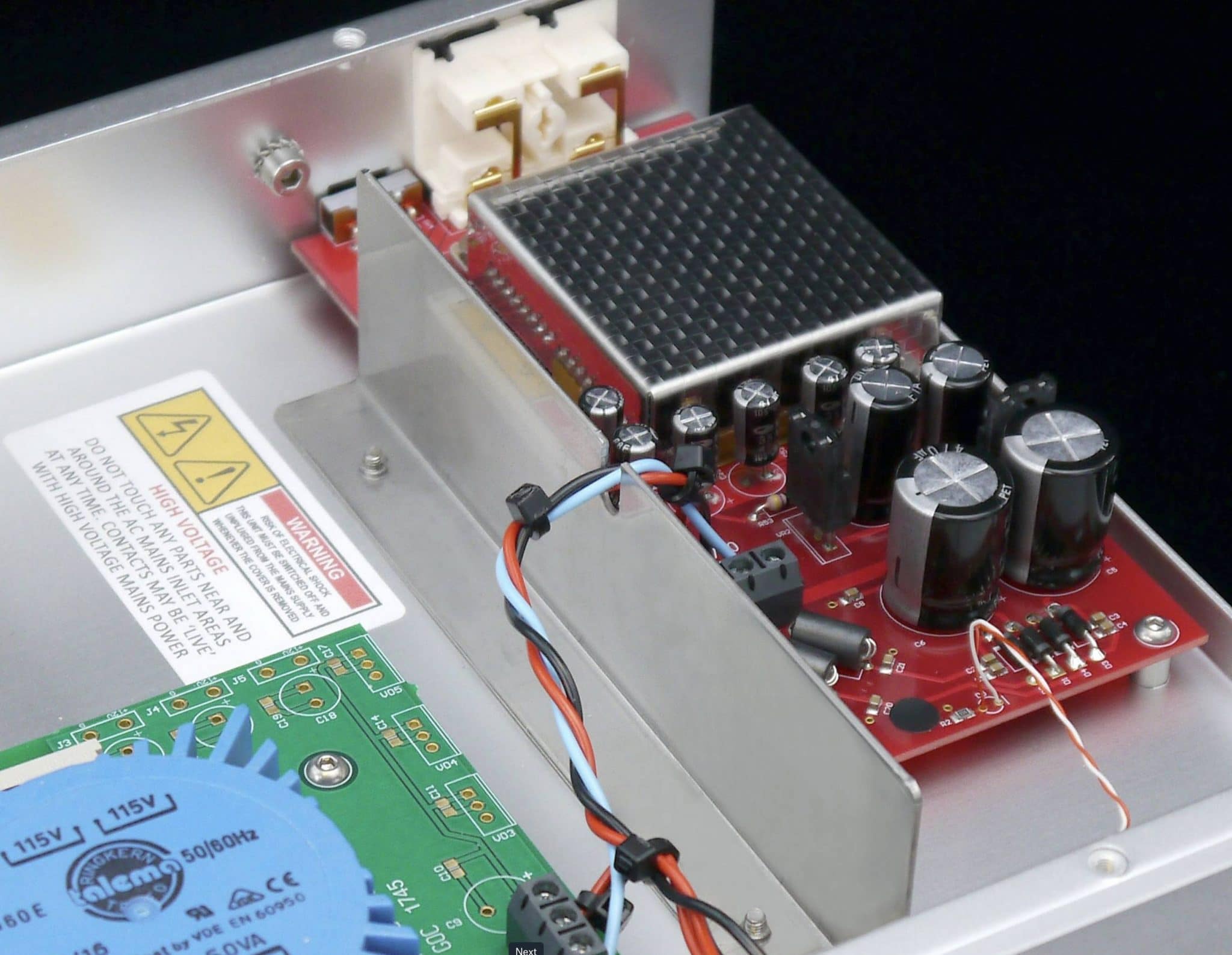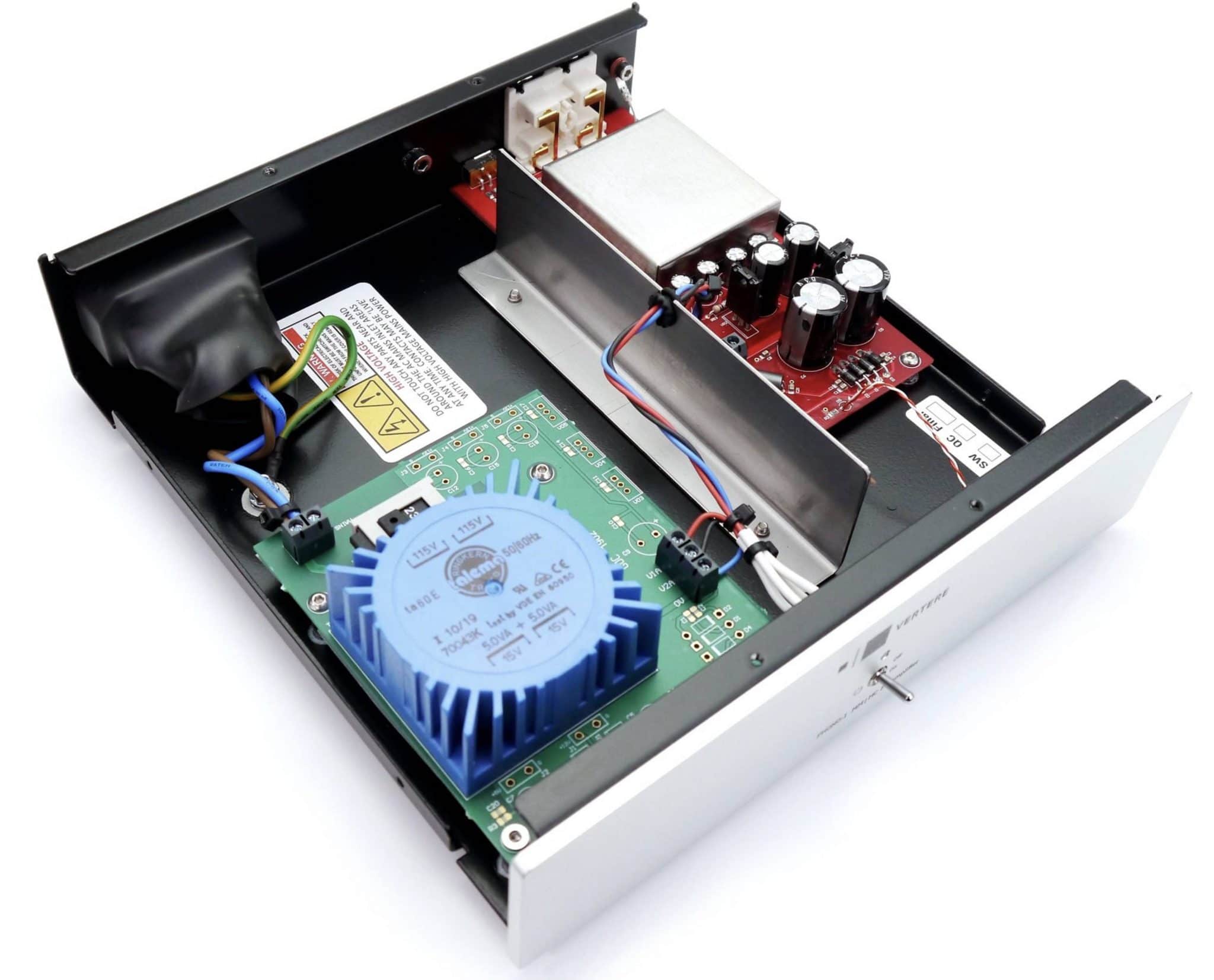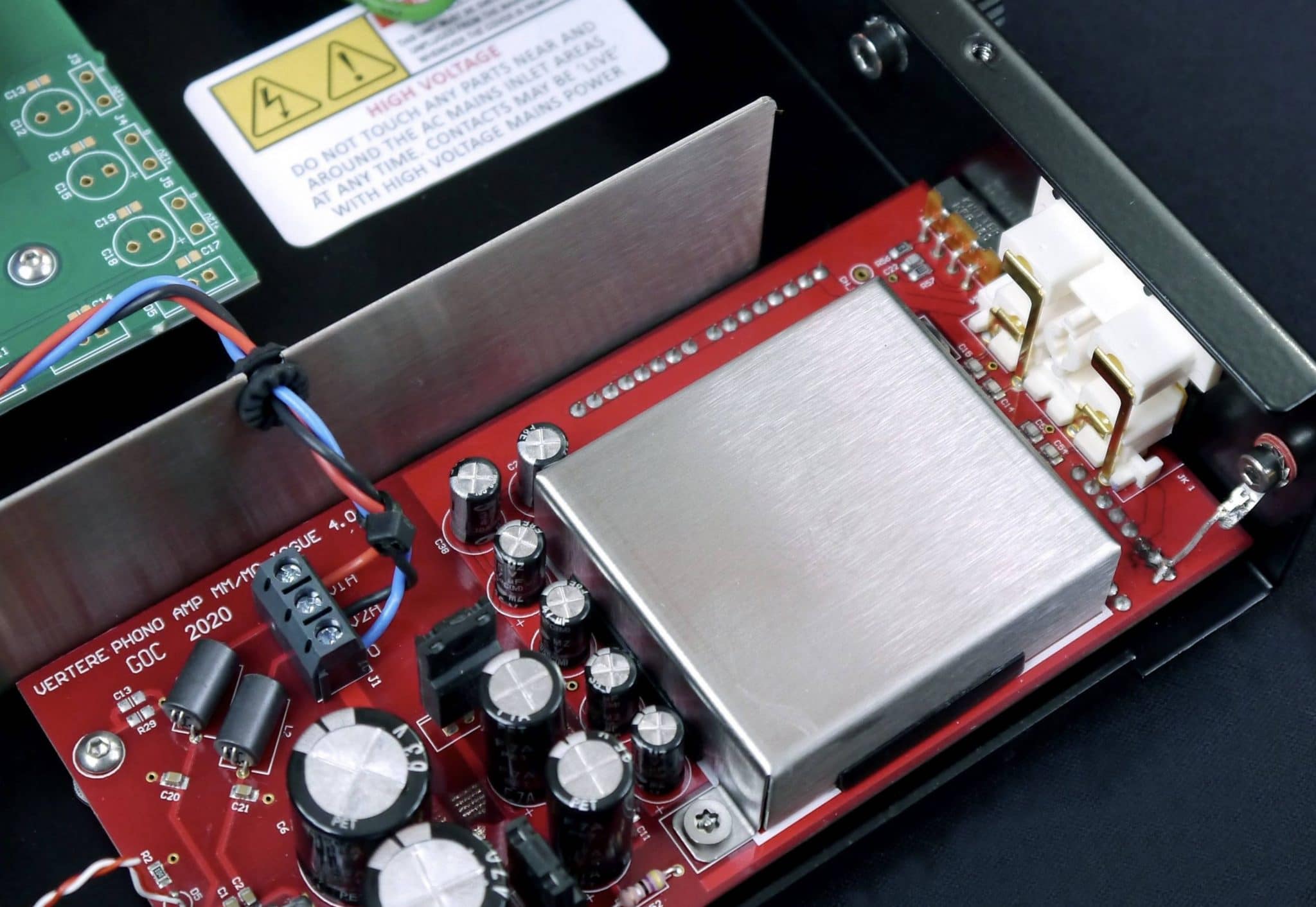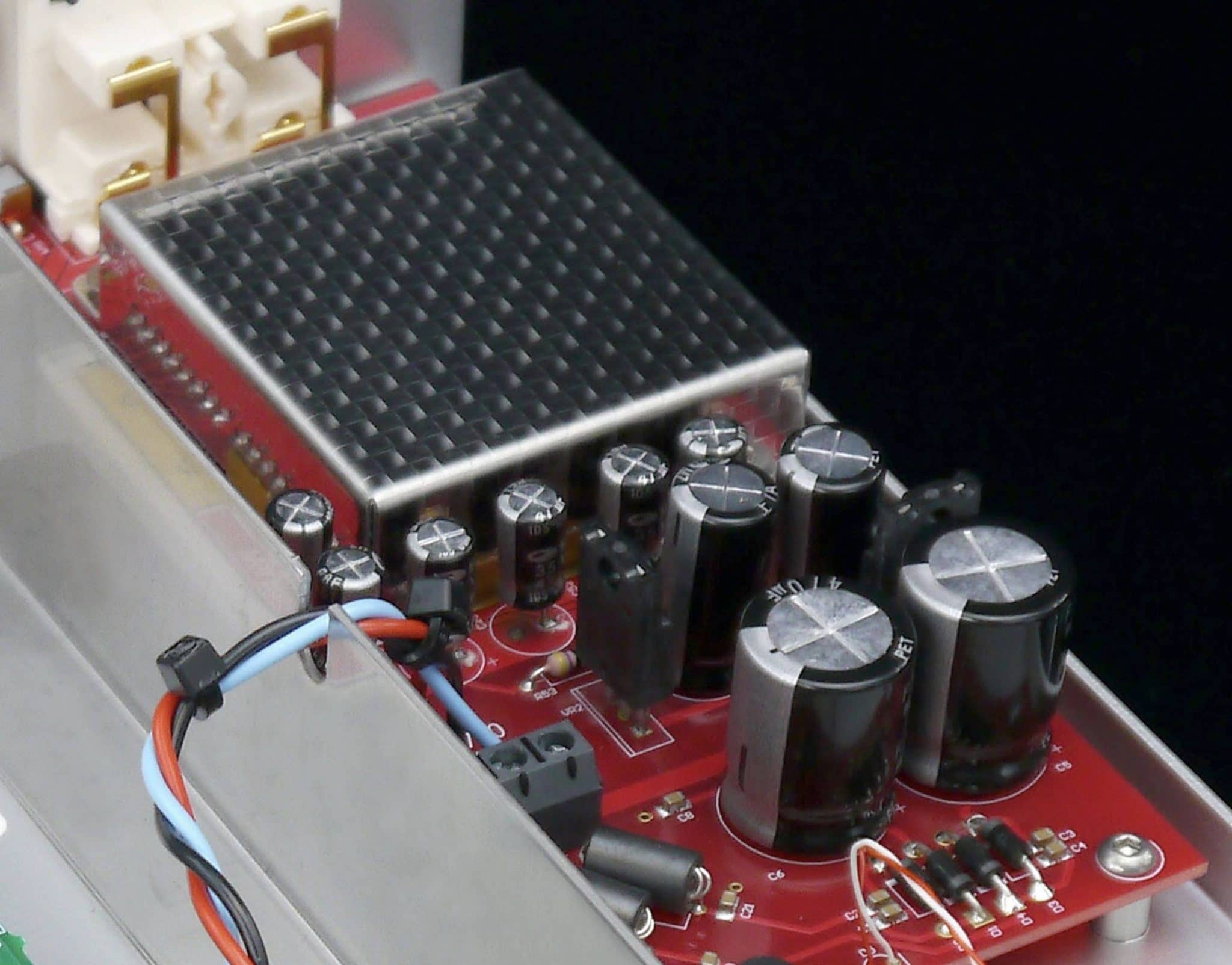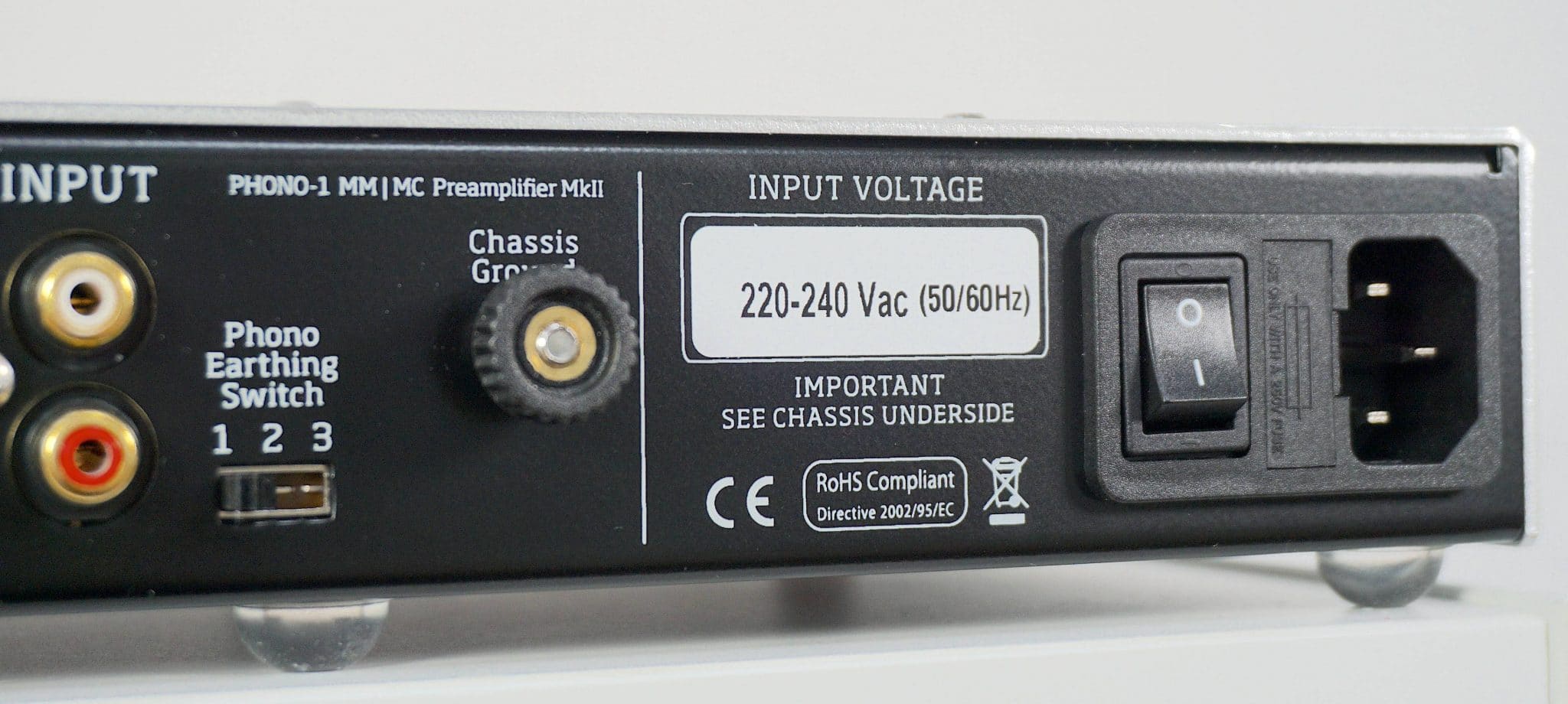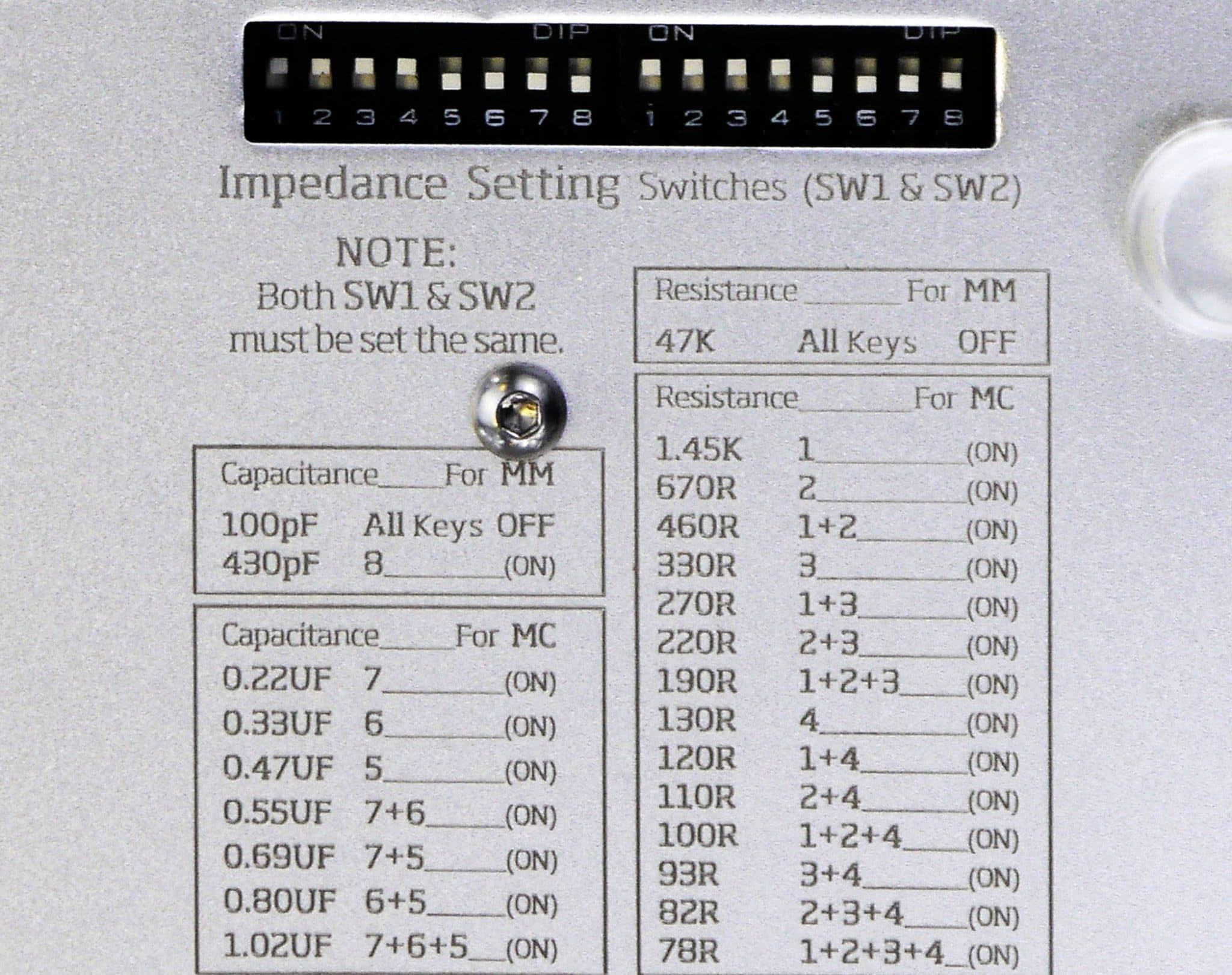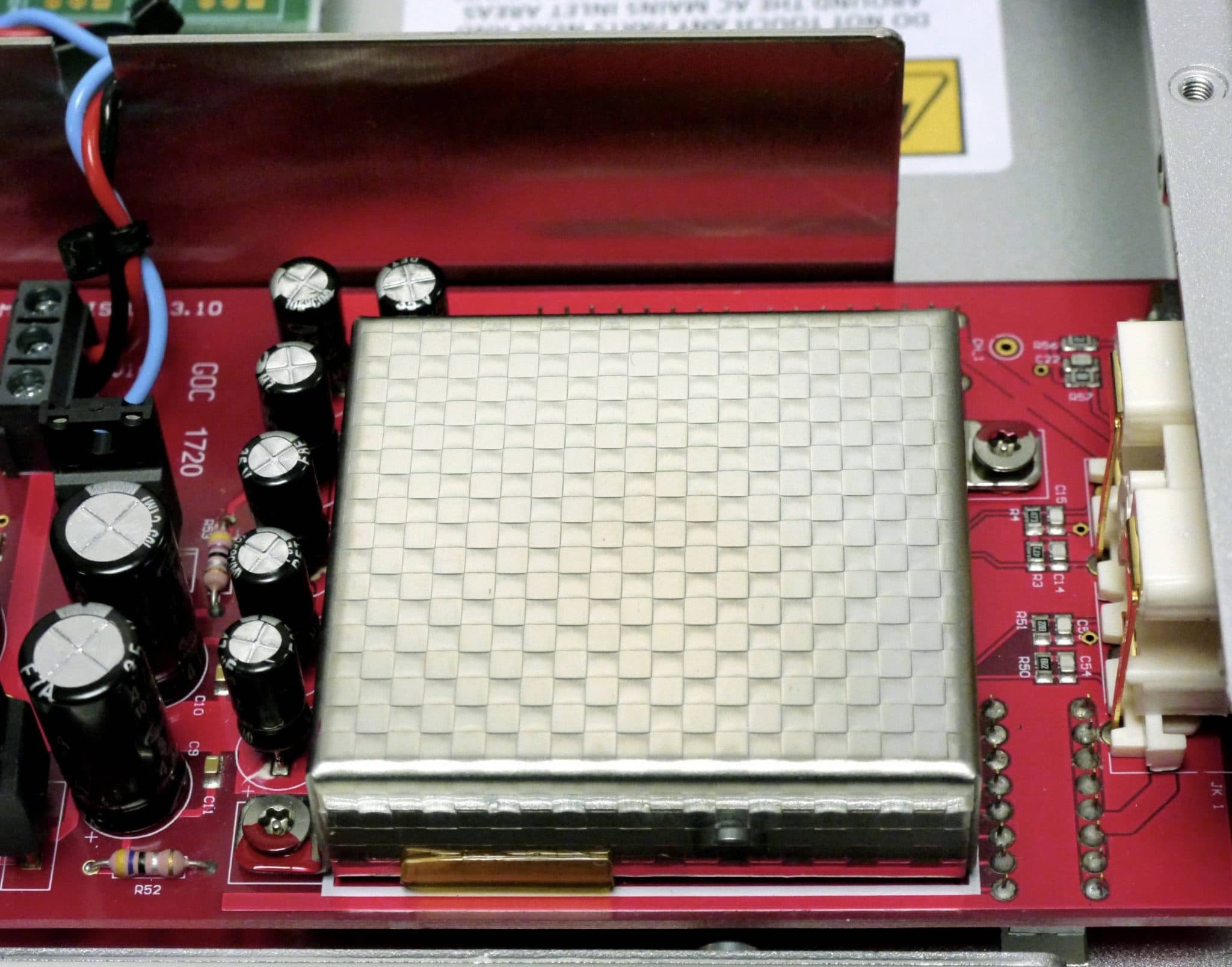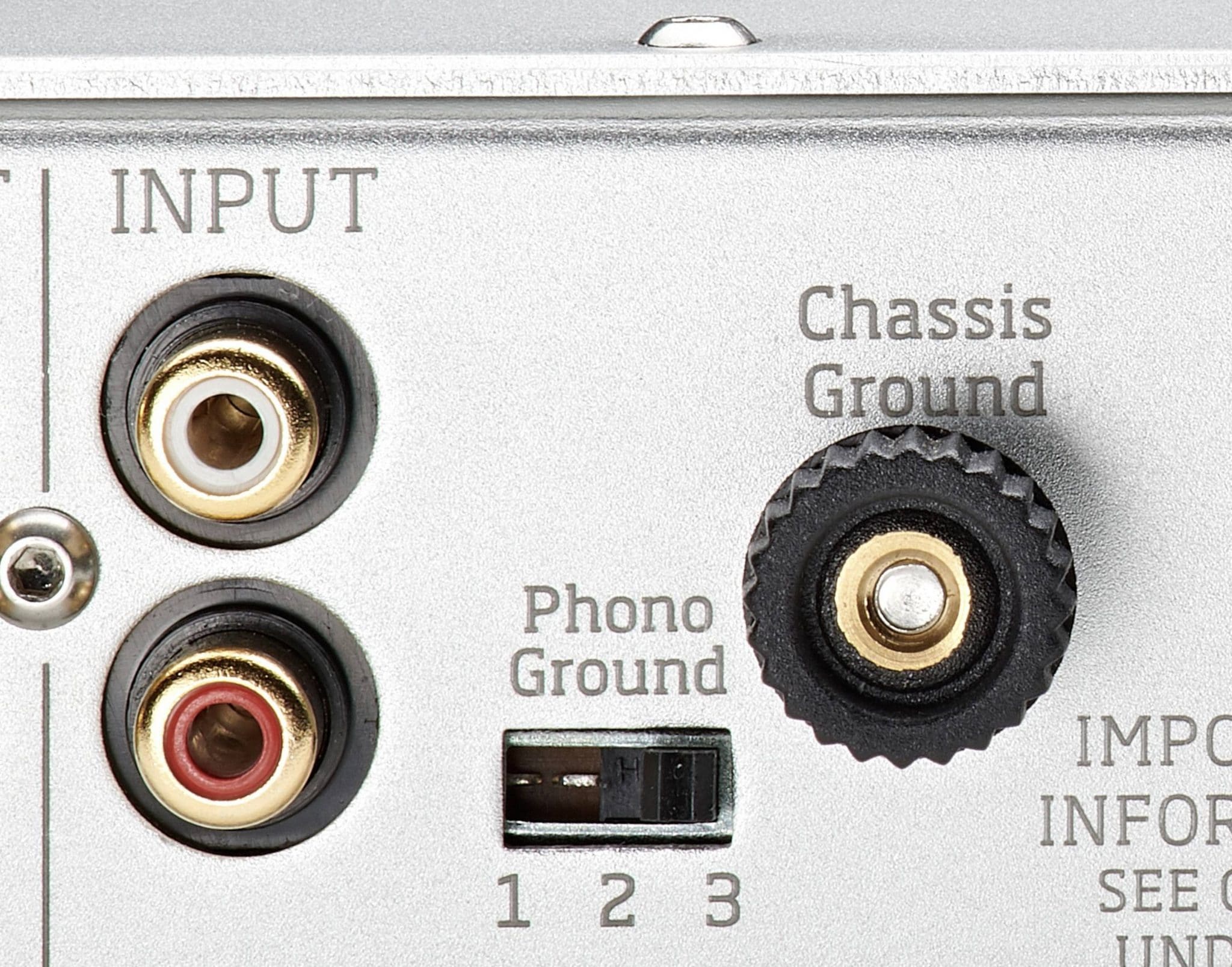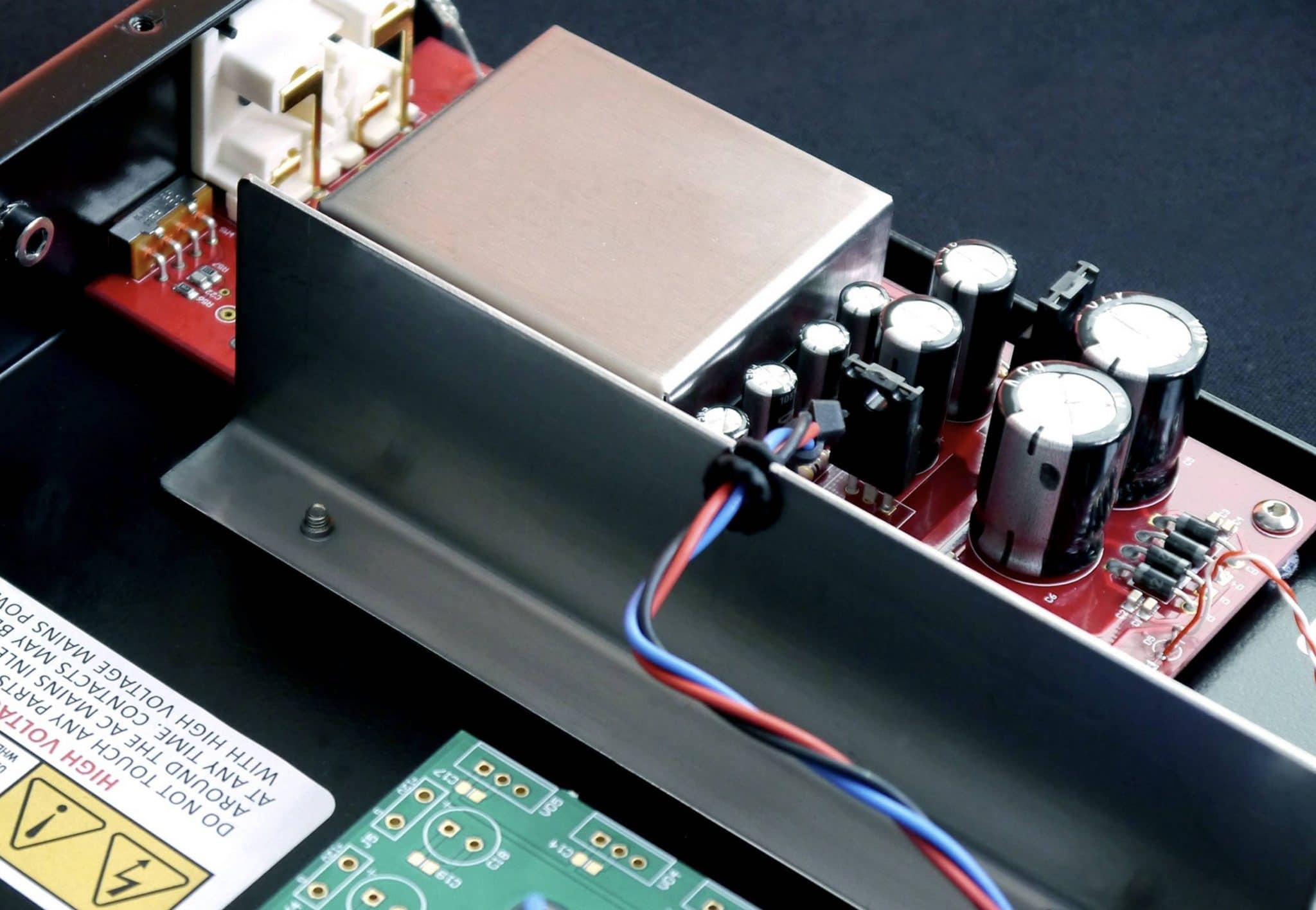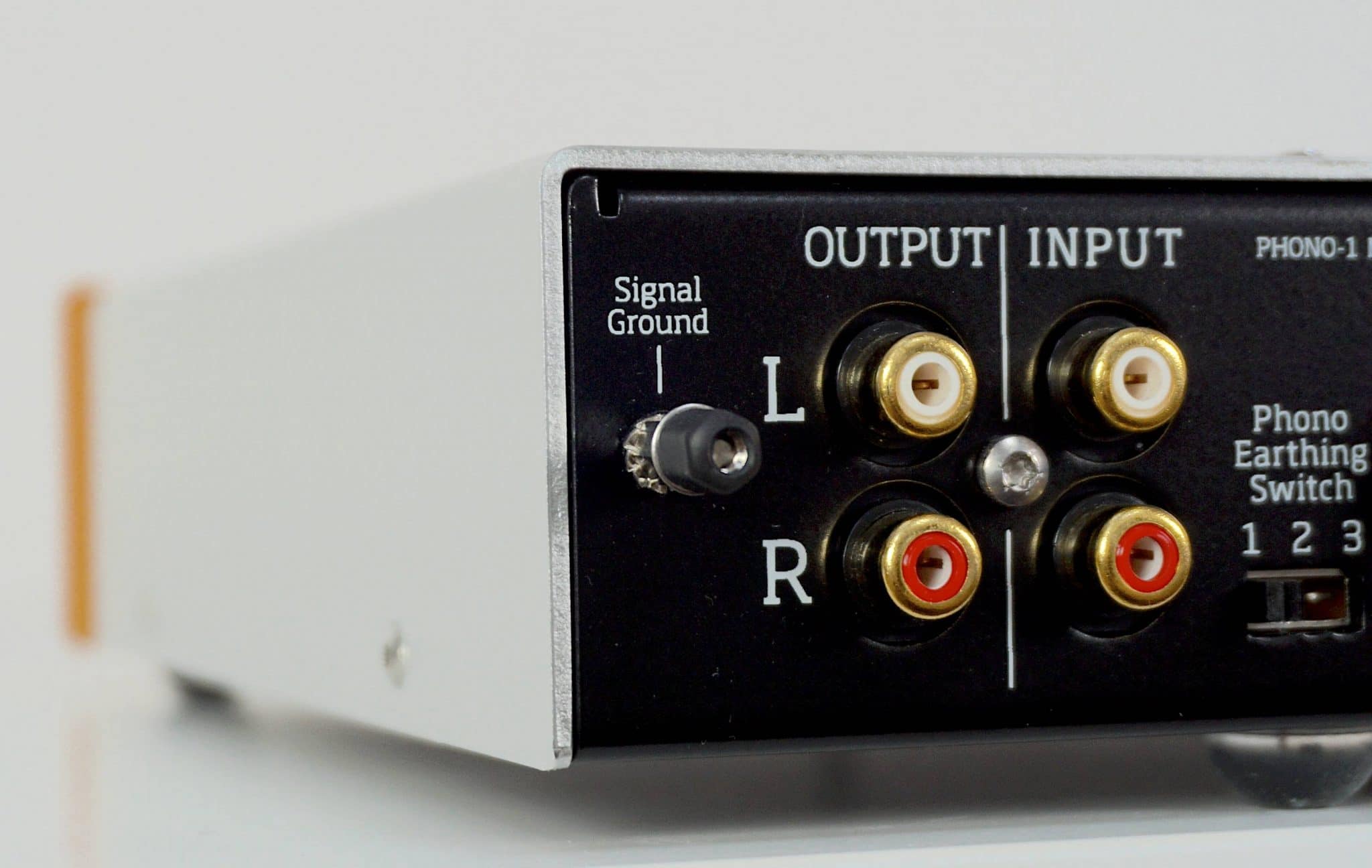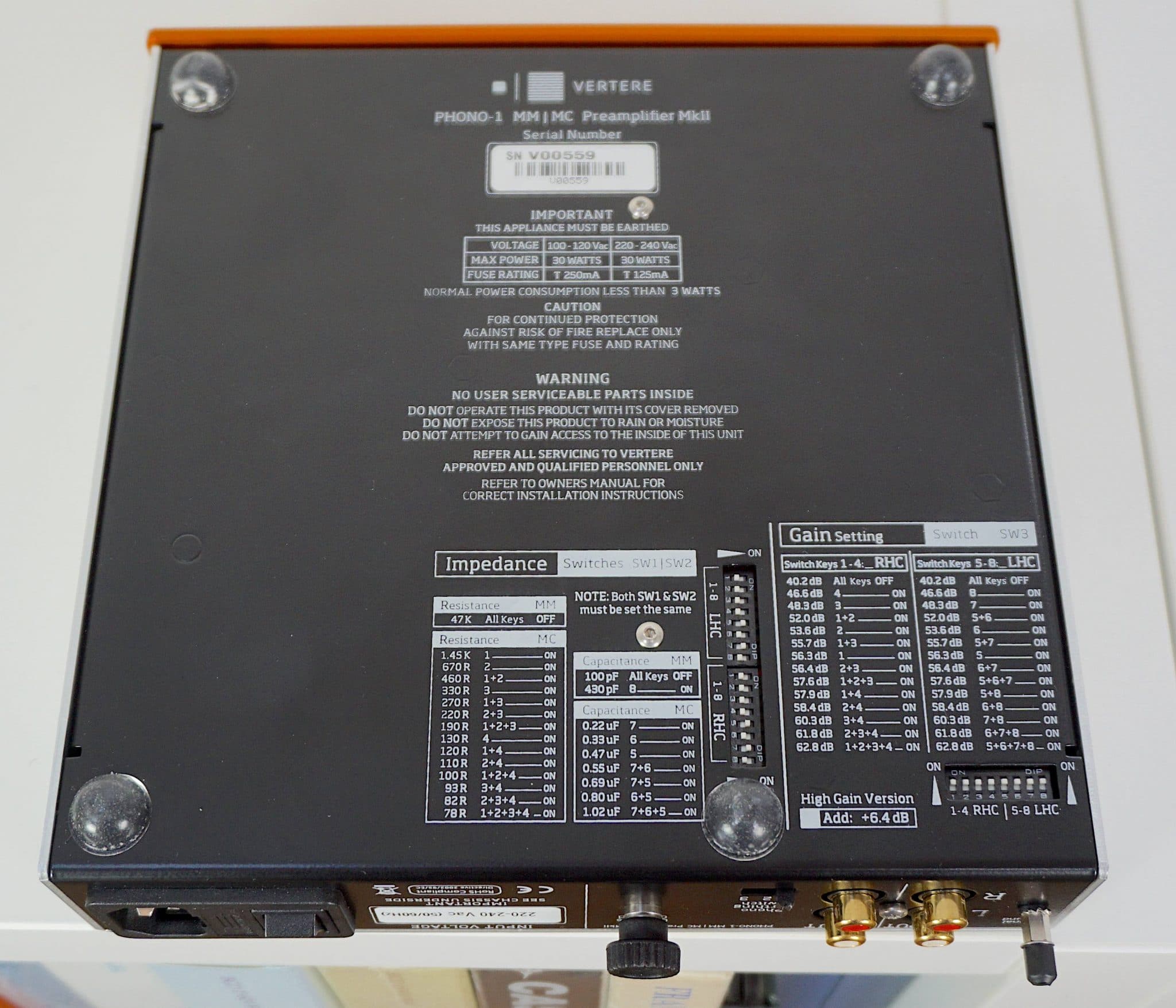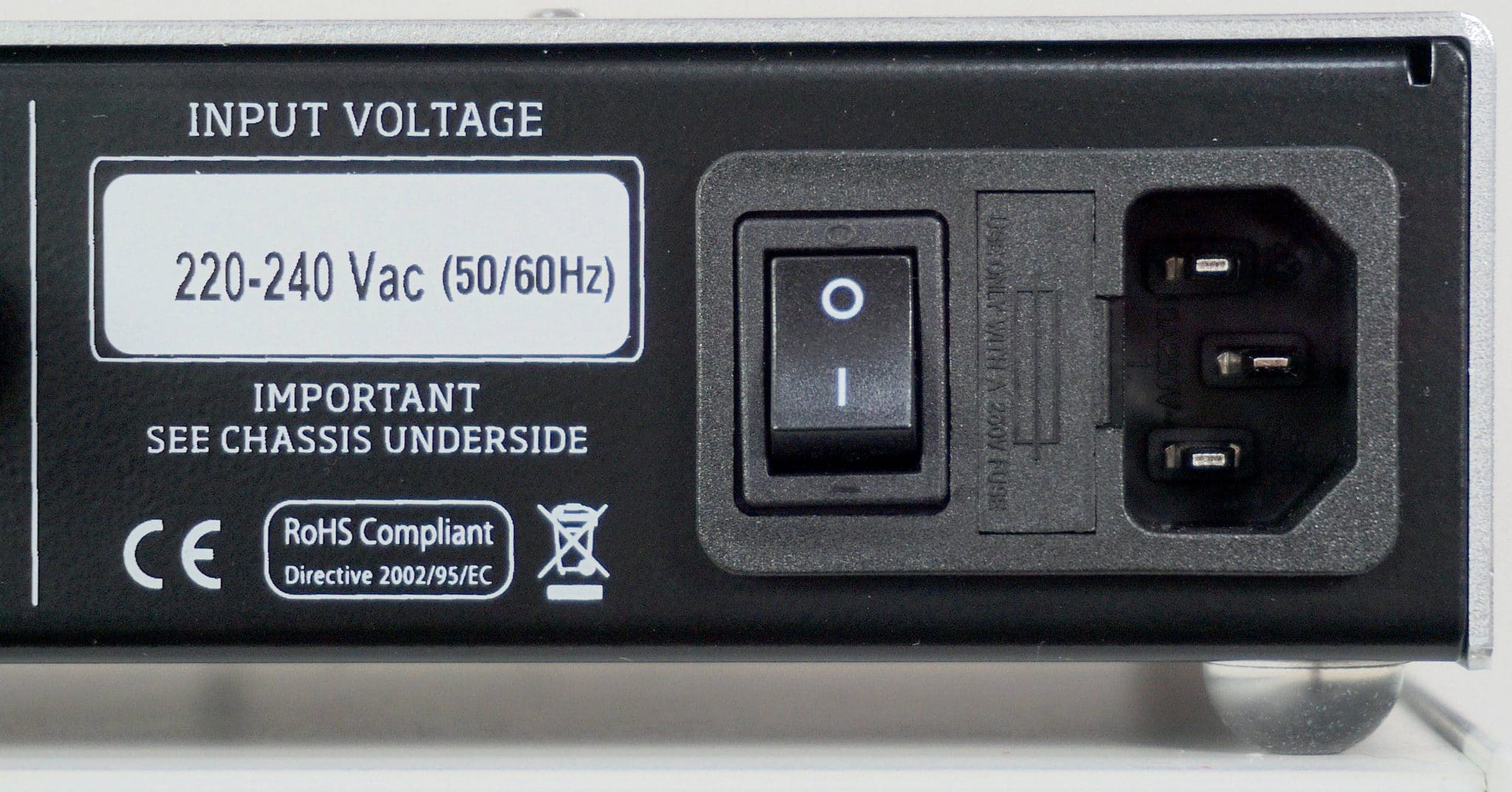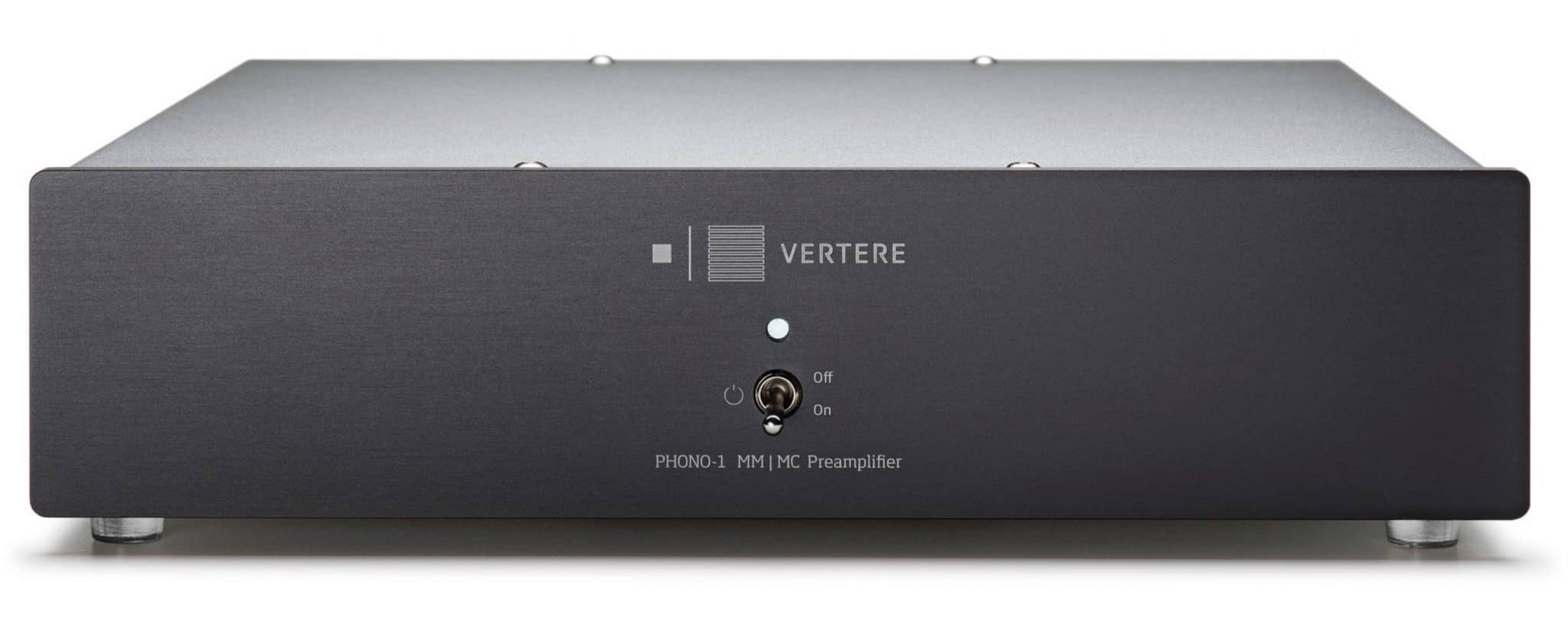The Article
Phono-1 Phono Amplifier From Vertere
13th April 2021
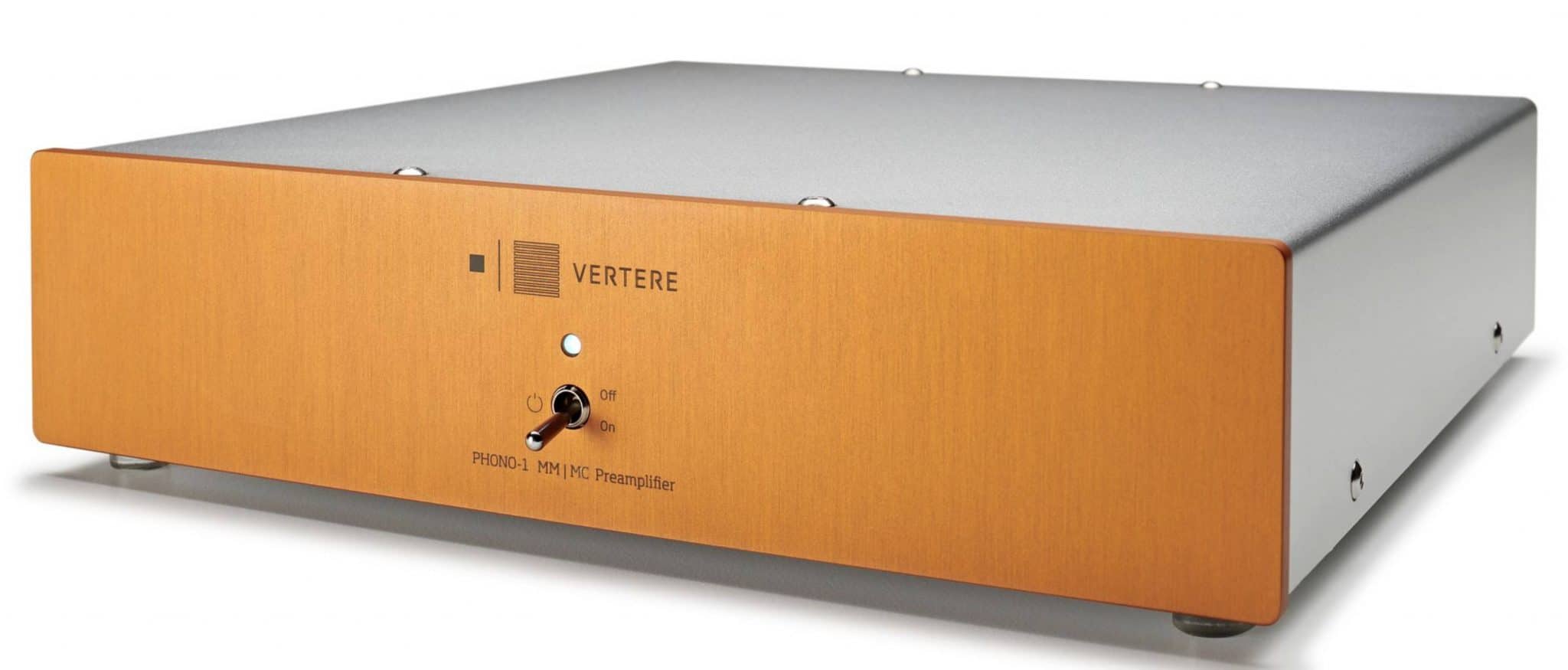
Relatively small and neat in form factor, Paul Rigby reviews this MM and MC-devoted phono amplifier from Vertere
Looking at the round price point for the Vertere Phono-1 phono amp, you might be forgiven in thinking that the price came before the design. That the price was a marketing target for this product but, according to Vertere, that’s not so, “The target price was £1000, giving scope for a good-looking case and excellent component choice. Had the component choice necessitated a retail price of £1100, this would have been the price.”
The size of the chassis was something that the company did aim for, however. The chassis is the size that was needed to fit the PCBs. It’s a Goldilocks design. Smaller would not have done. It allows space for adequate component spacing and shielding. And as the company commented, larger wouldn’t have been much use, either, “Too large a case just acts as an additional vector for vibration and resonance.”
Designer, Touraj is a fan of the passive/active combo phono amplifier design, where the HF section of the RIAA equalisation is passive and the LF gain stage is active.
The overall circuit is Op-Amp based but as the company said, “There are Op-amps and there are Op-amps. Some are amazingly good and some less good but even more important is the implementation. Circuit design is an area in which Vertere are very careful not to disclose much information. Proper implementation of any circuit is as crucial as the actual design itself.”
During the design, in terms of sonic personality the target was to make Phono-1 neutral with little character of its own. The key was that ‘little character’ didn’t mean boring or uninteresting. Phono-1 had to be as “engaging” as the source material.
DO THE DIP
The core interface of the Phono-1 is standard in terms of the usual inputs and outputs that run from your turntable and to your amplifier plus an IEC power socket. The latter is welcome in case you might wish to upgrade your mains cable. Right next to that is a power rocker switch too.
To the left of that rocker switch is a 3-way phono PCB Ground Management switch. This is for you to experiment with to find the lowest earth hum in your hifi chain.
There’s also a rare inclusion of a chassis Ground knob here – we’ll take a look at this in the Sound Quality section.
Underneath are a host of DIP switches to configure the Phono-1 for your cartridge. Able to handle moving magnet or moving coil, the Phono-1 has 12 gain settings ranging from 40.2dB to 62.8dB, 15 loading options from 78 Ohms to 47K and nine capacitance settings. The latter is relatively unusual and not found in many competing designs around this price point.
On the front is a simple yet satisfyingly clunky on/off switch. The compact, easy-to-use design is spoiled slightly by a blinding white power light that is powerful enough to drill a neat hole through six feet of lead cladding and should be kept away from any nearby nuclear power stations for fear of causing a core breach. I would recommend covering this force of nature with a piece of black tape.
Spanning 210 x 235 x 55mm and weighing in at just 2kg, there’s three choices of front panel colour available: Silver, Orange or Black.
SET UP
Before I launch into the sonic personality of this phono amplifier a quick overview of setting up this – or any – phono amplifier. Firstly, if you want to get the most from your hifi, ignore the spec sheets. Most phono amplifier manuals tell you to read the spec sheet for your cartridge and input the same settings from that sheet into your phono amplifier.
If you do that, you’ll have a workable phono amplifier sound. It’ll sound fine but your sound won’t be honed, it won’t be tweaked to perfection, it won’t fly in sonic terms.
See the gain on your main amplifier plus the loading, gain and capacitance as sliders on the desk of a mastering engineer (not all phono amplifiers have capacitance as an option but don’t panic if yours does not).
The trick is to balance all of these sliders to find the perfect sound for your ears. Those settings will depend on your main amplifier, your phono amplifier, your cartridge and the host turntable. Everything matters in sound terms (your ears are included in that), everything makes a difference so your settings will differ to mine.
Hence, I ended up with a loading of 78 Ohms (I wish there was a lower loading figure available and if I have a criticism to make in design terms it’s the lack of a lower figure in this part of the settings), a minimum gain of 45.4db and a capacitance of 0.69uf. But I wouldn’t recommend those figures to you.
To set up, have your main amplifier gain on loud-ish but not blaring. Put the capacitance, gain and loading on mid way. Then spend the afternoon using your ears to hear which figures suit you best. Compare each old setting with the next setting up. Then flip back down again. Then go up again to make sure. And continue to do that with each and every setting.
I start with the gain and increase slowly from the minimum figure. I stop when I hear any sign of ‘shouting’ from voices or bass crescendos, for example.
Then I move to loading. When the space and air around the soundstage starts to reduce and the midrange becomes tight and forced, then I back off.
If capacitance is available, to quote the manual, “…inadequate capacitance can cause some harshness, shouting and loss of fine detail…” This is because this setting helps to remove a frequency response lift above 10Hz caused by the mechanical resonance produce by the coil and cantilever.
Once you’ve set the figures, don’t be afraid to tweak a bit here and there. Fine tune. Under cook your settings, then overdo them, then find the sweet spot in the middle. Don’t rush this but once you’re sorted, you won’t have to look at these setting again. Unless you buy a new cartridge, that is.
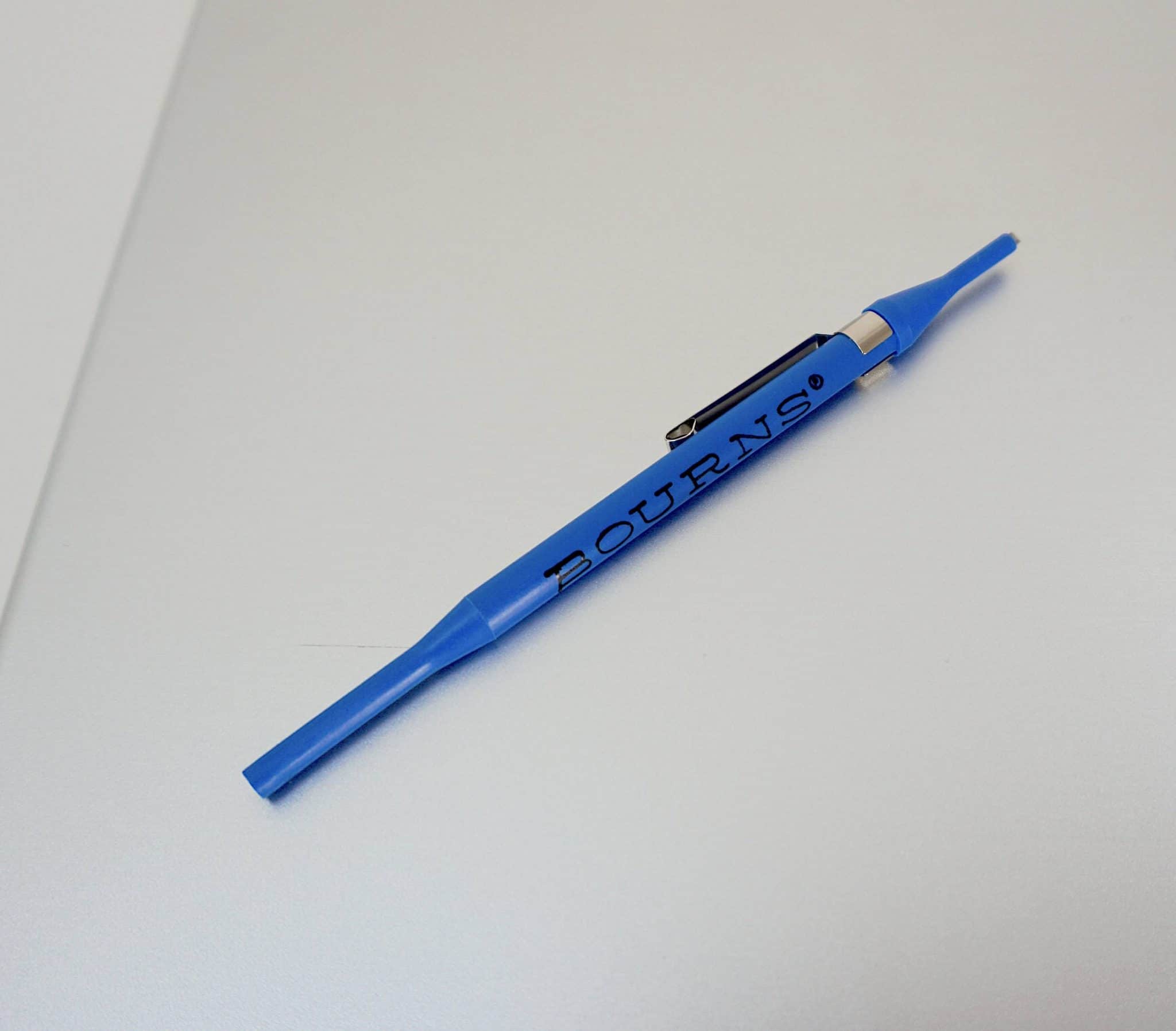
I have to say here that the Vertere manual offers advice along my own thoughts on sound testing. It does not demand that you follow the spec sheet. It encourages you to use your ears. This rather enlightened level of advice is refreshing to see in a phono amplifier manual and is particularly recommended on those terms.
SOUND QUALITY
I began with a Jamaican folk song from the early 20th century, Linstead Market, sung by The King Singers from their 1971 Polydor LP, Encore. This song features complex harmonies, piano, percussion and upright bass. Any phono amplifier tackling this one needs to infuse the soundstage with space, any sense of claustrophobia will kill this song stone dead.
The other reason for choosing harmony vocals for this review was to properly test the capacitance settings (see more above).
The overall performance from the Phono-1 was excellent. Despite my disappointment that a lower loading figure was not available, I was impressed with the amount of air and space that was infused into the soundstage. It moved around both the voices and the instruments, providing a sense of movement but also dynamic range. That is, there was lots of space for both vocals and instruments to pull back into fragile and delicate mode and then to belt out a crescendo when required.
During this time, I felt that vocals had an efficient focus throughout this track. Vocals moved with an impressive agility here, starting and stopping on a pin head in exactly the same way the cartoon Road Runner does when he zooms to a twanging stop. The accuracy of the vocal delivery helped the pace of the music. You never felt and sense of dragging or smudging in the bass, for example.
The space around the soundstage also helped the collection of detail. Edges of instruments were easily sought by the ear which meant that more music could be heard, a greater level of insight could be experienced too. Even here on this track, one that is not designed be basscentric, the lower frequencies were tight and honed adding an extra degree of power around the lower end. I was also happy to hear a more organic bass response. There seemed to be more shades within the upright bass string plucks. More information within the middle of each bass notes, as it where.
HIGH ENERGY
I then moved to high-energy music from 2002. Team Doyobi’s DF0:BAD (Skam) is an experimental electronica, eight-track release of wildly varied beats, clicks, beeps and distortion.
The Phono-1 handled the lot with aplomb. In fact, it seemed to be thoroughly enjoying itself. From the deep bass throbs, to the quite atonal blips and clicks that chattered in the background, the Phono-1 managed keep pace with the lot, maintaining a strict precision thought the performance but allowing the music to roam around the soundstage.
Whether that music hit the ears in jagged fashion or as a wall of bass or as a distorted mess, the Phono-1 kept order but did so while keeping the dynamic ceiling high so this track always had headroom to leap and bound. Energy was maintained at all times.
It might be a surprise to some but the most exciting feature on this chassis, as far as I’m concerned, is the chassis Ground knob. I attached my Russ Andrews RF Router to this knob via a spade cable to reduce the noise attached to the chassis and heard a dramatic reduction in high-frequency noise from the Phono-1. The upper mids became smoother, more relaxed while opening up further to encourage further insight within upper midrange detail.
I highly recommend owners of the Phono-1 to invest in such an accessory to maximise Phono-1 performance.
Vertere also supplied four isolation feet for the Phono-1 in a metal case with a hinged lid. The feet are known as Iso-Paw. These shaped feet feature felt pads. The felt is stuck to shaped sorbathane domes. I placed four of these under the chassis of the Phono-1 itself, as opposed to the feet of the Phono-1, and found further sonic improvements.
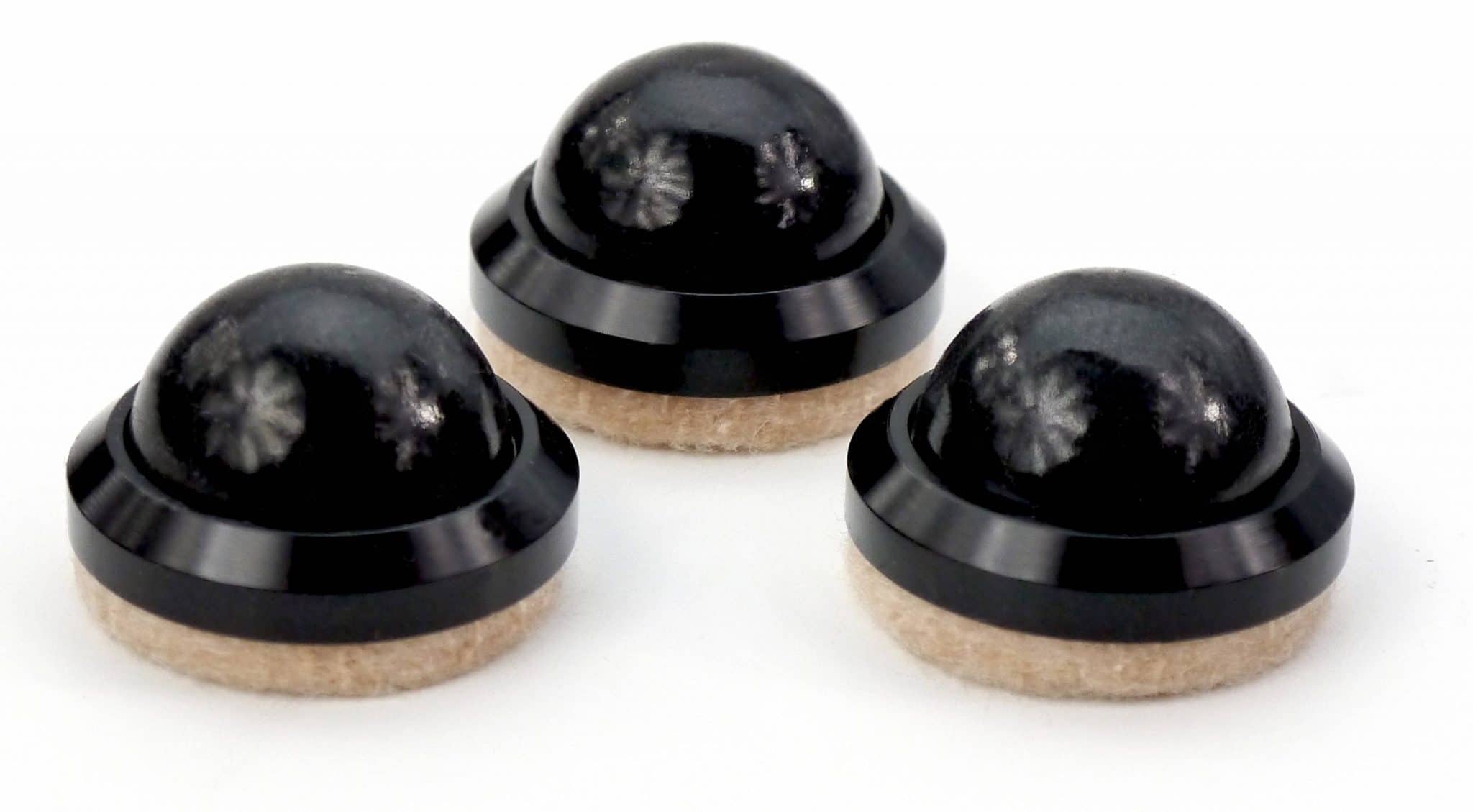
The mids smoothed out still further while the mids became ever calmer. Upper midrange detail such as percussive rim shots increased their precision. The strike of each shot being crisp yet detailed. Again, I heartily recommend the addition of these feet to all Phono-1 owners.
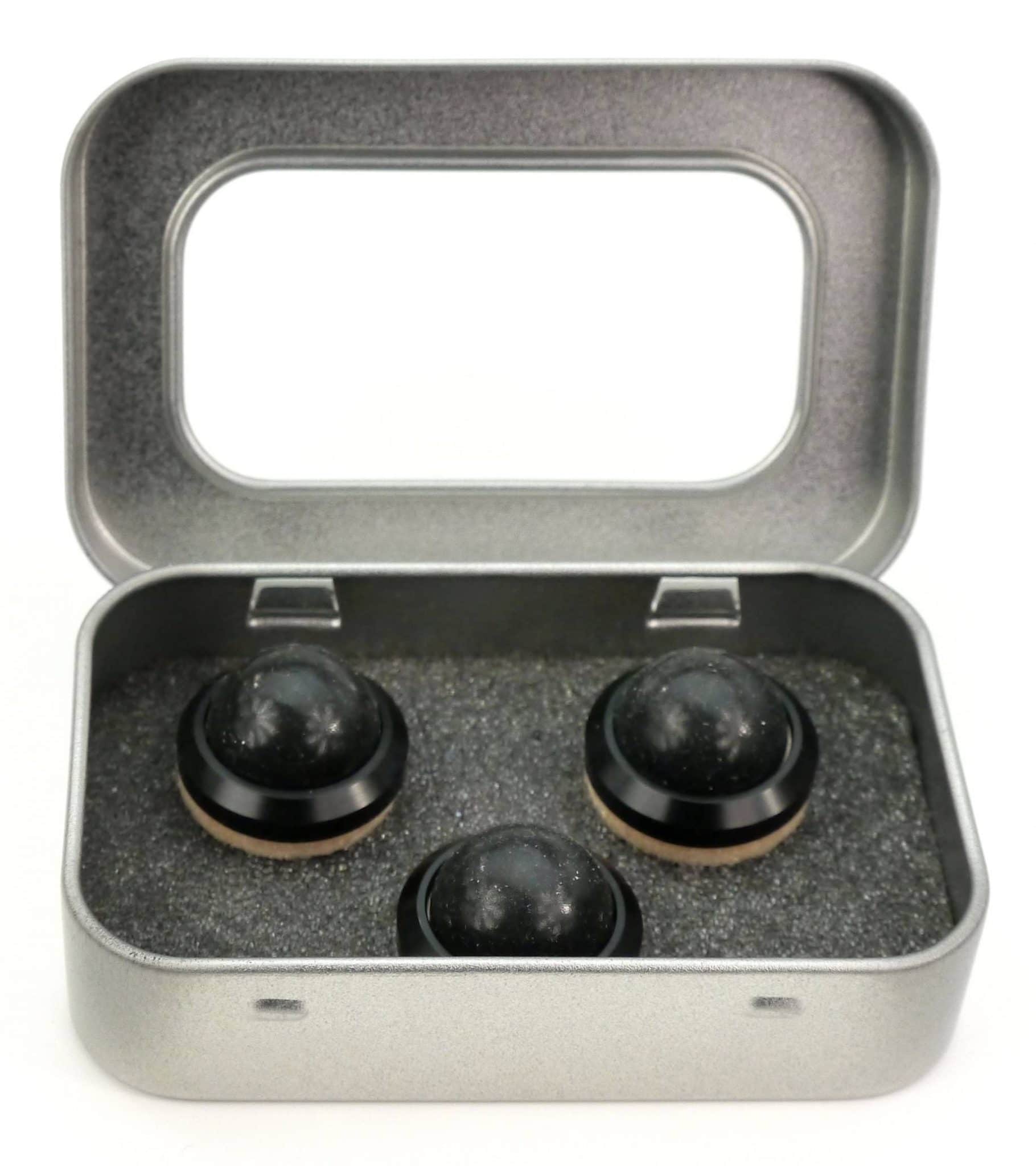
Phono amplifiers are the most prone hi-fi component to high-frequency noise and vibration and benefit dramatically from isolation an anti-vibration treatments. See the chassis Ground option and feet ancillaries as essential parts of the Phono-1 toolkit.
CONCLUSION
Presented as a neat and compact build, the Vertere Phono-1 phono amplifier offers a host of features and options that allow you to tweak your hi-fi system to your heart’s content. The addition of a chassis Ground is very useful bonus.
In sound terms, the Phono-1 offers energy, precision and accuracy while allowing music to roam across the frequencies without restriction.
It’s certainly an impressive design and it demands your attention.
VERTERE PHONO-1 PHONO AMPLIFIER
Price: £1,000 (Iso Paw Feet: £95 for 3 or £115 for four)
Tel: 0203 176 4888
Website: www.vertereacoustics.com
GOOD: range of settings, airy mids, focused bass, detail, chassis ground option
BAD: limited lower loading settings, power light
RATING: 8
[Don’t forget to check out my new Patreon Page at www.patreon.com/audiophileman, for exclusive postings, giveaways and more!]
REFERENCE
Tellurium Q cabling
Blue Horizon Professional Rack System
Harmonic Resolution Systems Noise Reduction Components
Air Audio AC-2K Balanced Transformer

